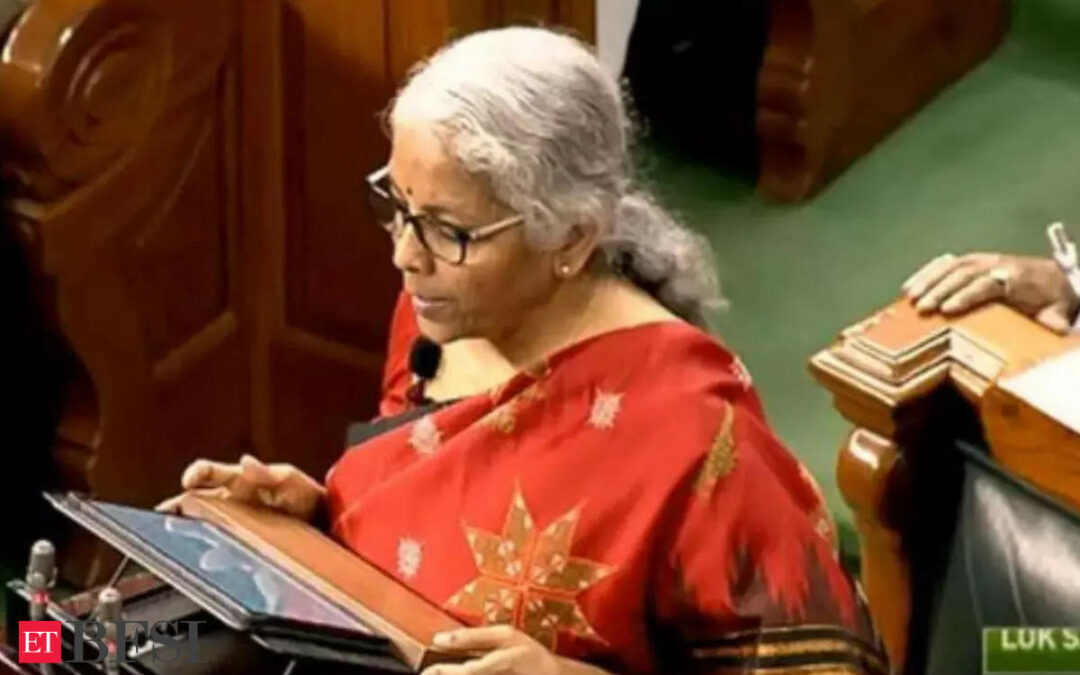– Navya Menon
The Economic Survey highlighted that India is one of the most vulnerable countries as far as climate change is concerned, despite contributing only 4% to the entire carbon emissions of the world.
In 2021, at COP26 held in Glasgow, India pledged to go net zero by 2070. PM Narendra Modi has also said, “what is needed today is mindful and deliberate utilization, instead of mindless and destructive consumption.” Hence, in this budget, the Finance Minister has laid out multiple schemes and policies aiming to fast-track India’s commitment to net zero carbon emissions and the need for a greener and cleaner economy. The policies are as follows:
Also read: Economic Survey 2023: How has India performed in Green Finance?
#1. Solar Power:
Through the Production Linked Incentive Schemes(PLI), the government is proposing the set up of domestic manufacturing of 280 GW of installed solar capacity by 2030 for an allocation of 19500 crores. This is meant for efficiency modules, with fully integrated manufacturing units from polysilicon to solar PV modules to be installed.
#2.Circular Economy:
Circular Economy simply means to gradually decouple economic activity from the consumption of finite resources and designing waste out of the system. Underpinned by a transition to renewable energy sources, the circular model builds economic, natural, and social capital. Meant for productivity enhancement, it is estimated to create large opportunities for businesses and jobs. The government will target ten sectors which will be focussed on electronic waste, end-of-life vehicles, used oil waste, and toxic & hazardous industrial waste.
#3.Carbon Neutral Economy:
5% to 7% bio pellets will be co-fired in thermal power plants resulting in CO2 savings of 38 MMT annually. It’s a win-win situation for both farmers and the economy as it will provide extra income to farmers and job opportunities to locals and help avoid stubble burning in agriculture fields.
#4. Energy Service Company(ESCO):
Energy saving will be an important aspect of energy management as both energy efficiency and saving measures will be promoted. ESCO business model will facilitate capacity building and awareness for energy audits, performance contracts, and common measurement & verification protocol.
Also read: Budget 2023: Analysis of Green Finance & roadmap ahead
#5.Public Capital Investment
Capital investment holds the key to speedy and sustained economic revival and consolidation through its multiplier effect. Capital investment also helps in creating employment opportunities, inducing enhanced demand for manufactured inputs from large industries and MSMEs, services from professionals, and helping farmers through better agri-infrastructure. The economy has shown strong resilience to come out of the effects of the pandemic with high growth. However, we need to sustain that level to make up for the setback of 2020-21.
#6.Data Centres and Energy Storage Systems
Including dense charging infrastructure and grid-scale battery systems will be included in the harmonized list of infrastructure. This will facilitate credit availability for digital infrastructure and clean energy storage.
#7.Sovereign Green Bonds
The government will be issue these for mobilizing resources for green infrastructure. The proceeds will be deployed in public sector projects which help in reducing the carbon intensity of the economy. The RBI had already released the first tranche this month for 8000 crore rupees. The next 8000 crore rupees will be open in the coming month.
With this investment taken together with the provision made for creation of capital assets through Grants-in-Aid to States, the ‘Effective Capital Expenditure’ of the Central Government is estimated at 10.68 lakh crore in 2022-23, which will be about 4.1% of GDP.











